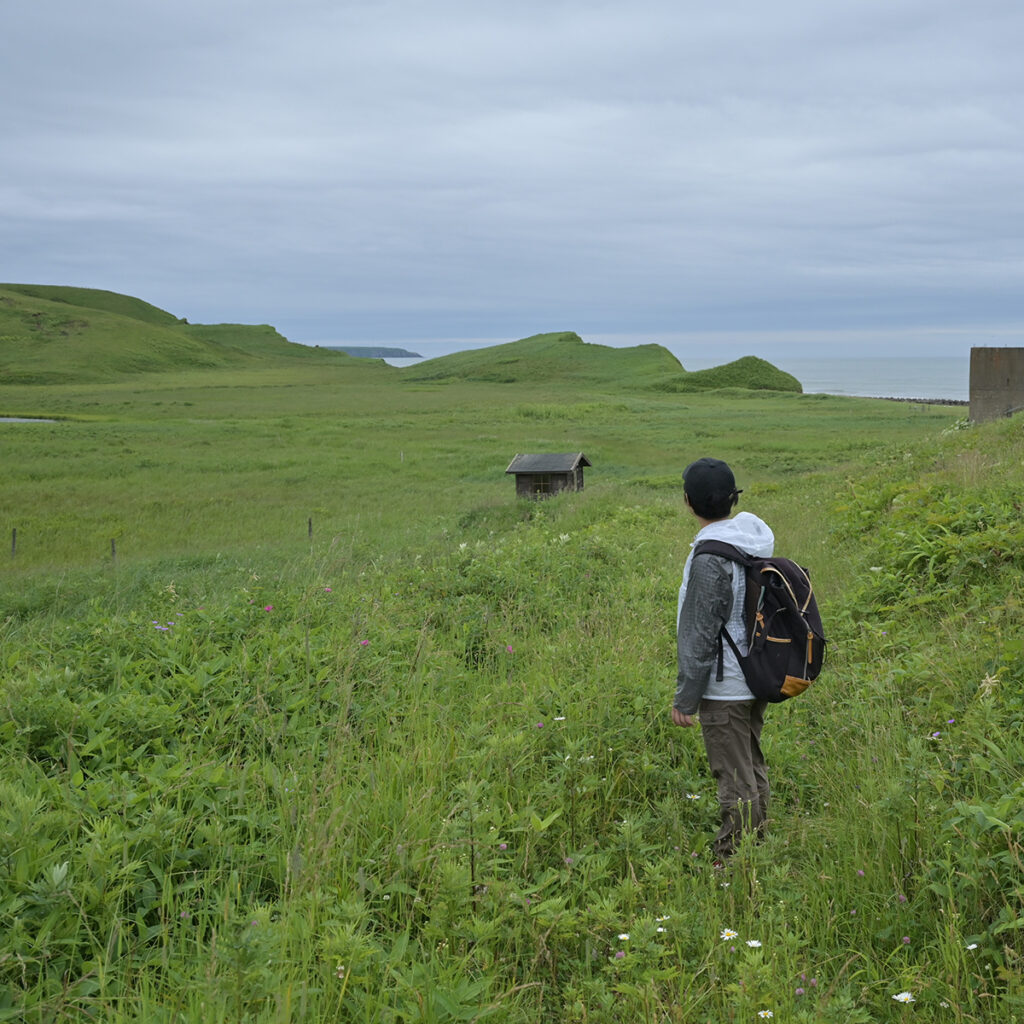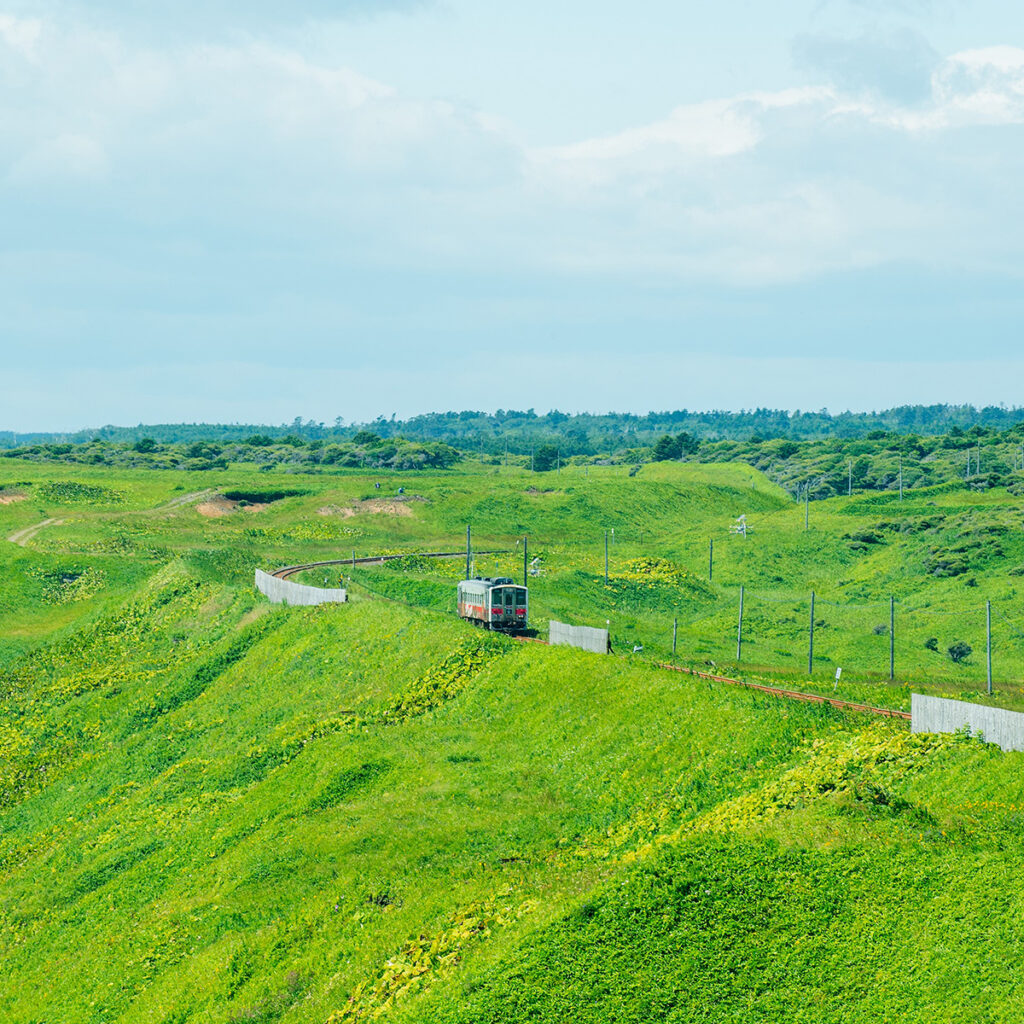▶Mr. Sawao runs guided tours for small groups. The one-day nature tour of Nemuro has been a big hit lately. Photo by Mr. Sawao

Things to Do
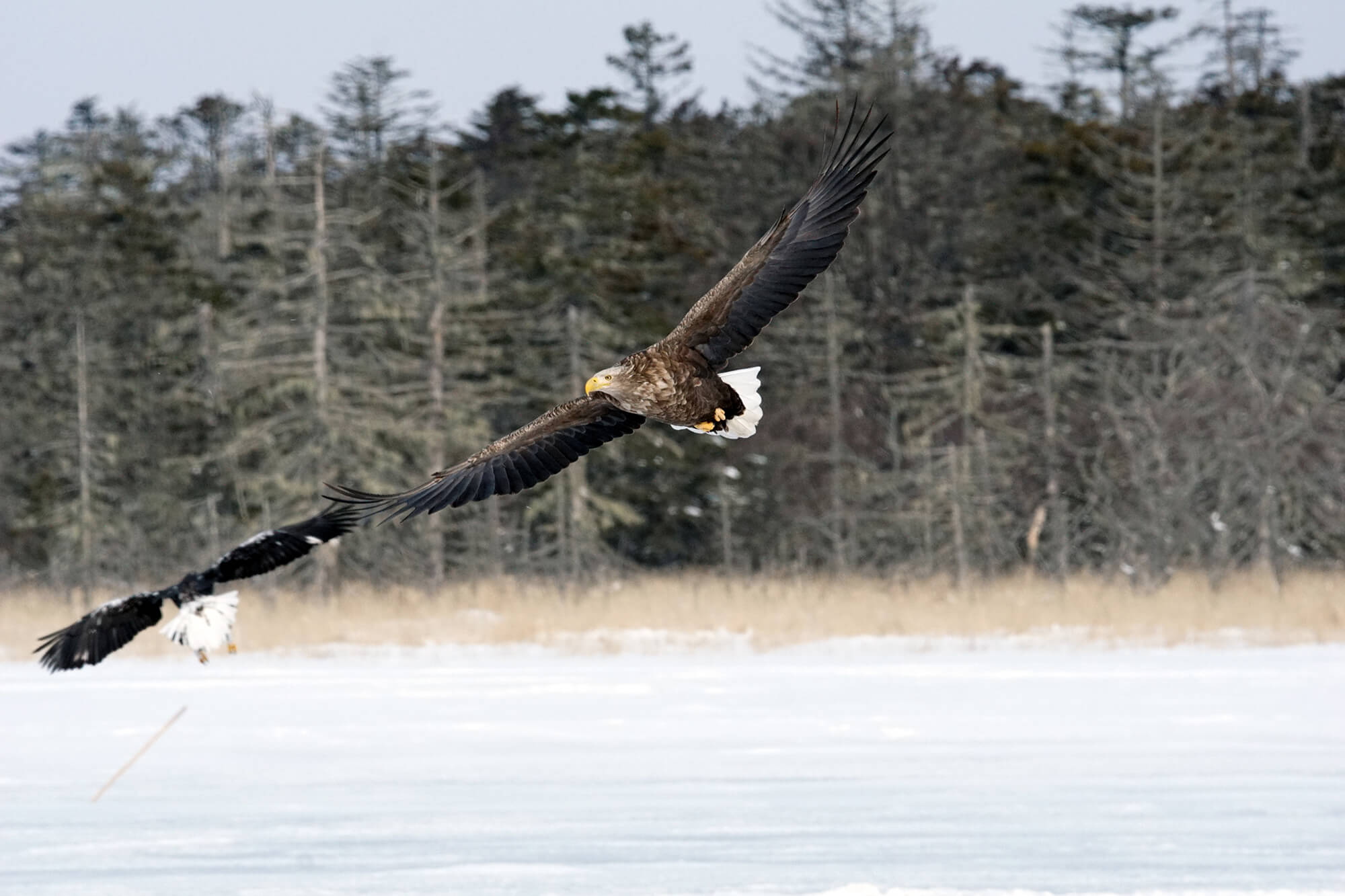
Bird watching in Nemuro, a haven for wild birds
From small birds that bless our ears with beautiful songs to eagles that spread their large wings and fly gracefully in the sky, many wild birds can be observed throughout the year in nature-rich Nemuro. This abundant environment is known as a haven for wild birds, attracting birdwatchers from all over the world.
But beginners and first-time visitors to Nemuro might find it difficult to know where the birdwatching areas are or how to spot the birds. This is where guided birdwatching tours come in handy. I asked a Nemuro nature guide who has been observing wild birds on a daily basis to let us in on the wonders of birdwatching that even beginners can enjoy. (All bird photos are provided by Mr. Sawao.)
*The content of the article is information as of 2023.
Nemuro nature guide Hidekatsu Sawao
I spoke with Hidekatsu Sawao from the Nemuro Nature Center about all things birdwatching.
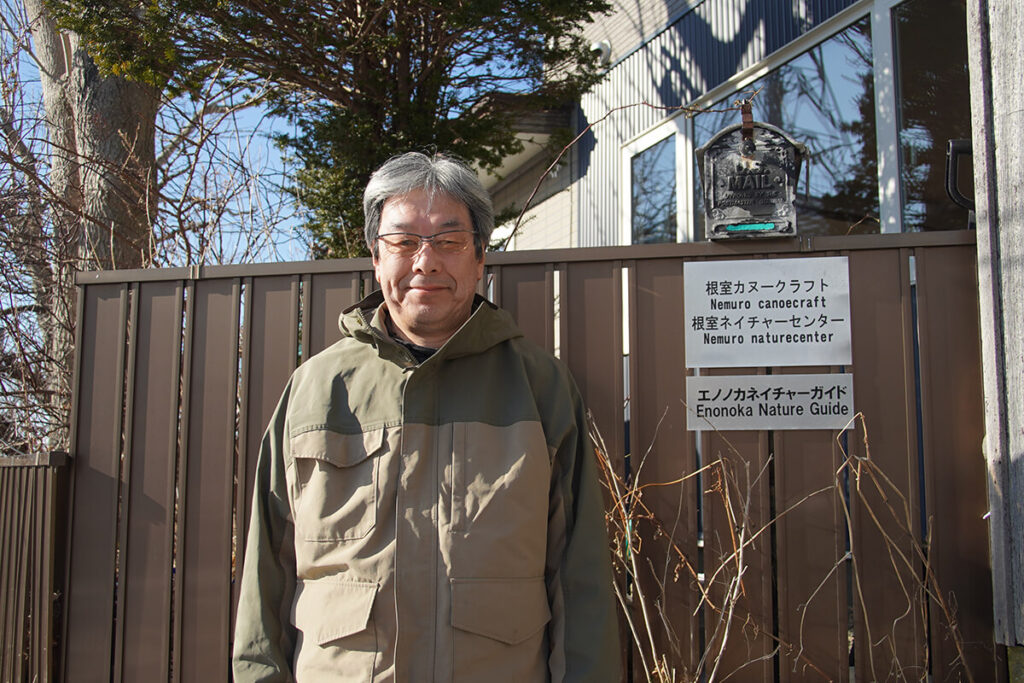
Mr. Sawao is from Kushiro but he moved to Nemuro for work. At 38, he discovered canoe making, which was gaining popularity at the time, and set up a workshop near Lake Furen. But by the time his workshop was ready, the boom had fizzled out, and he struggled to make it a viable business. That’s when he reached a turning point. “I was also responding to requests for canoe rides at the workshop,” recalls Mr. Sawao. “At that time, I was approached by a canoe operator on the Kushiro River, and for about four years I helped as a canoe guide in the summer. That’s where I got my training.” Through his work as a canoe guide, Mr. Sawao built up his knowledge about wild birds. Gradually, his work as a nature guide increased, and in 2000, he established the Nemuro Nature Center.
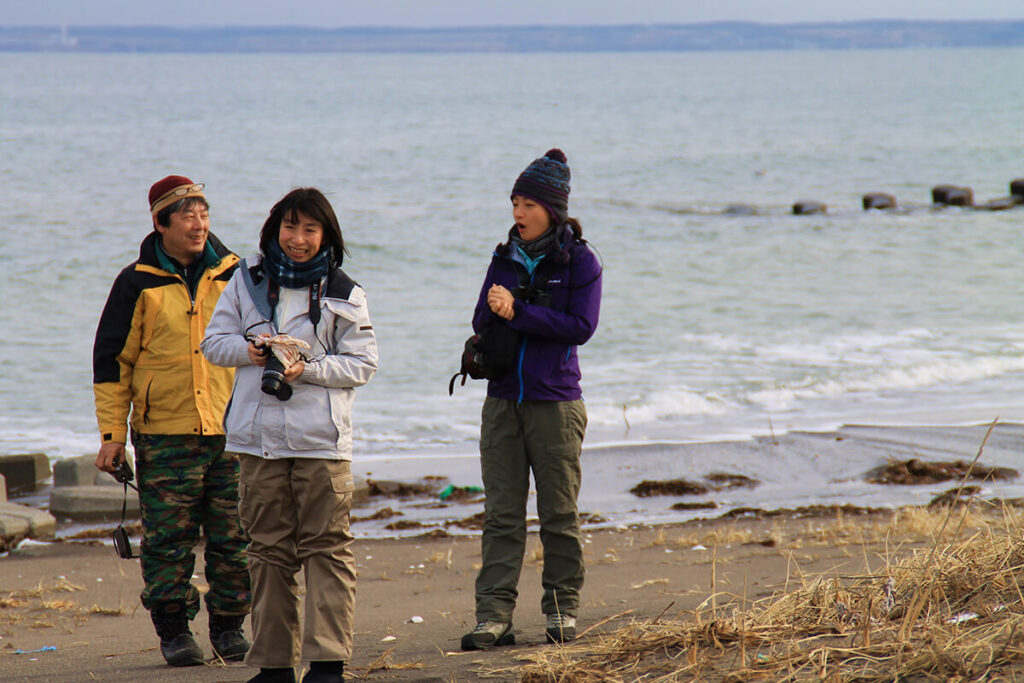
The people who request a guide range from beginners who want to experience birdwatching to photographers who travel around Japan in pursuit of birds. Nature guides tailor their tours depending on what their guests want to see, the day’s climate, and the latest bird information, taking everyone through the rich nature typical of eastern Hokkaido, such as the Nemuro Peninsula, around Lake Furen, and the Notsuke Peninsula.
How to enjoy birdwatching
Why are there so many wild birds to be seen in Nemuro in the first place? The answer lies in Nemuro’s natural environment and geographical location.
Many migratory birds come in search of food such as water plants and small crabs because the area has many wetlands and bodies of water, such as Lake Furen. Ducks come in the spring and fall, small birds that spend the winter in Honshu (the main island of Japan) come in early summer and eagles come in winter. This area is also located halfway between the Okhotsk coast and Honshu, so the birds replenish their strength by feasting on an abundance of food.
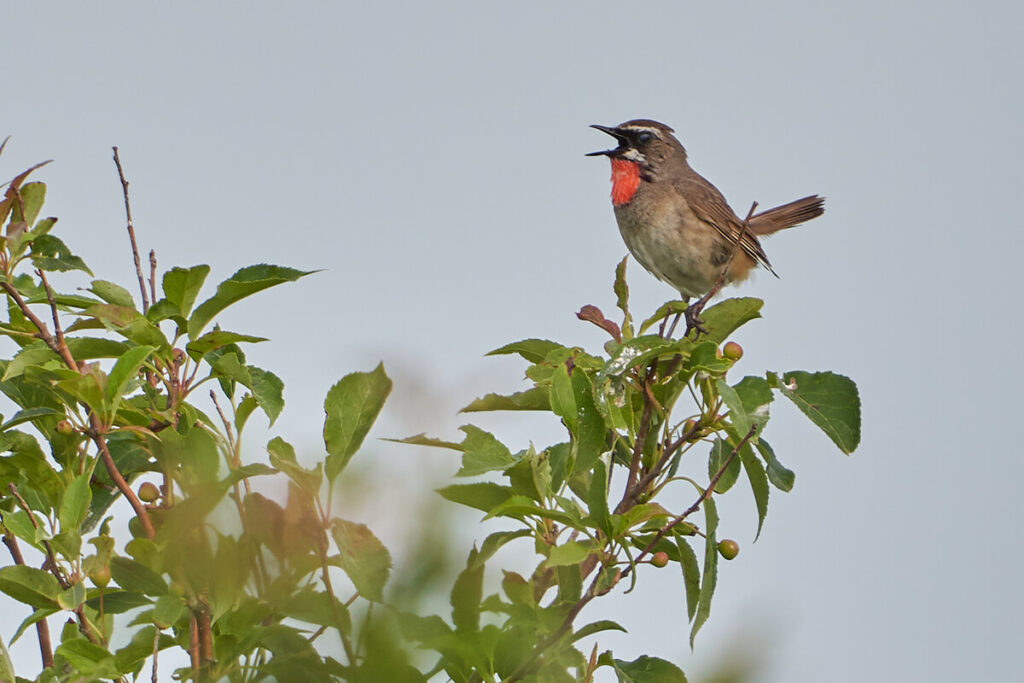
▶A Siberian rubythroat that comes from the south. These birds migrate to Hokkaido in spring and summer for the breeding season.
For Mr. Sawao, the fun of birdwatching is understanding the habits of birds. “I like to wonder what they might be thinking or why they’re looking at something. Understanding the intentions of birds is interesting. For example, I once saw a sparrow hiding in a thick leafy part of a pine tree. I looked around to see if it was on the lookout for something, and then I saw a fox.” Mr. Sawao has observed so many birds that now he can tell the differences between the lifestyles and behaviors of different species. He says that he enjoys discovering things about the lives of birds that you cannot learn from field guides or videos.
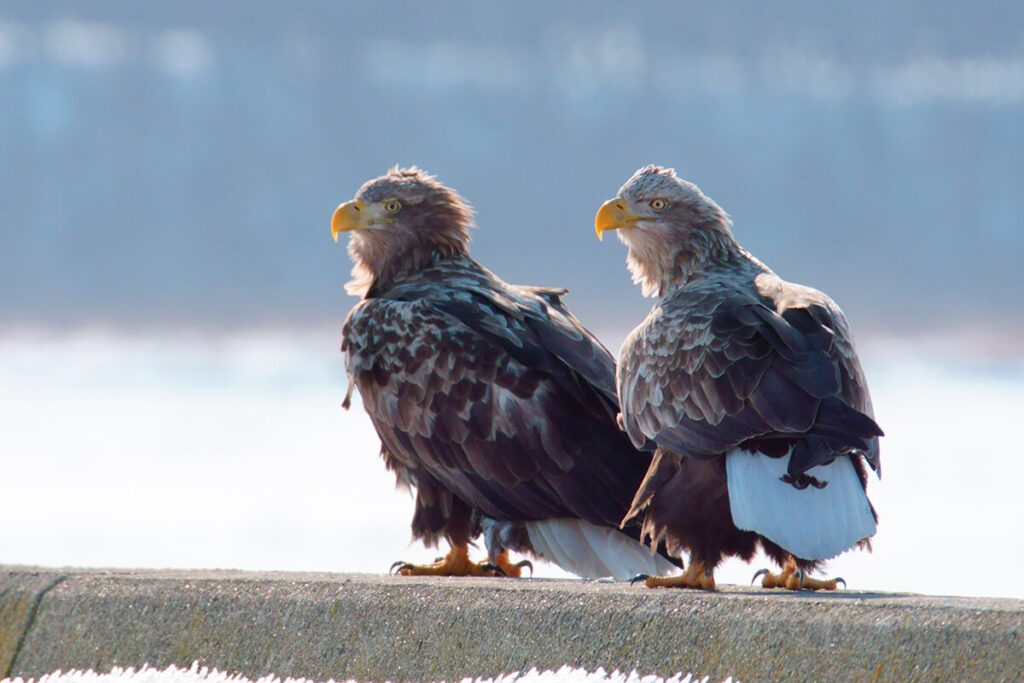
▶Two white-tailed eagles, birds that represent winter in Nemuro, stand close together.
“Surprisingly, eagles don’t fight each other and can often be seen perched amicably on the same tree. But if another eagle has food, the rest will try to steal it,” said Mr. Sawao. “The seagulls in Nemuro fly up all at once when a ship comes in and when white-tailed eagles fly in. If you look around when the seagulls fly by, you’ll see white-tailed eagles flying in the distance.” Mr. Sawao is full of interesting bird stories from his discoveries. I couldn’t contain my surprise as I listened to stories about the lives of birds—it was all new to me.
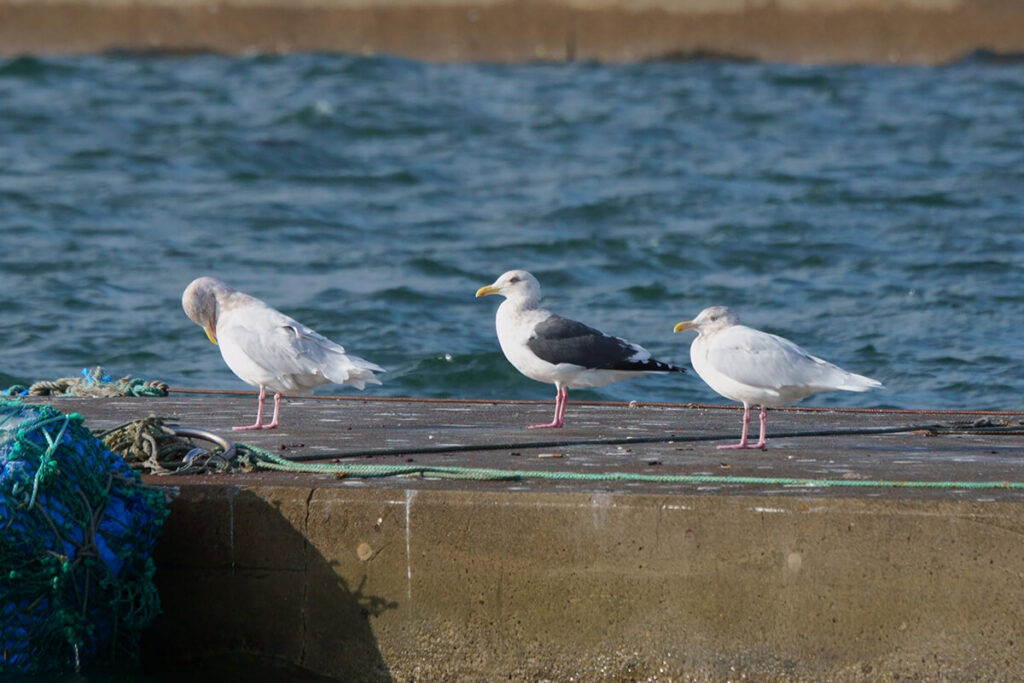
▶Seagulls who live at the port. Although you can see these birds near the ocean in all parts of the world, you might discover something new if you observe them closely.
Many first-time birdwatchers are worried that they may not find any birds, so I asked Mr. Sawao if he has any advice. He prefaced his answer by saying, “It’s something you get used to,” and then told me that “different species have different flying locations and preferred heights.” For example, the long-tailed tit can often be found in pine trees above one-third of the tree’s height. Whereas other small birds tend to move down from the middle so the key is to change the height of where you’re looking depending on what kind of bird you want to see.
The way birds fly is also an important thing to keep an eye out for. Mr. Sawao said that the silhouette of a bird flying is also a good indicator of its species, as each species has its own distinctive style, such as flying up and down or flapping its wings hard.
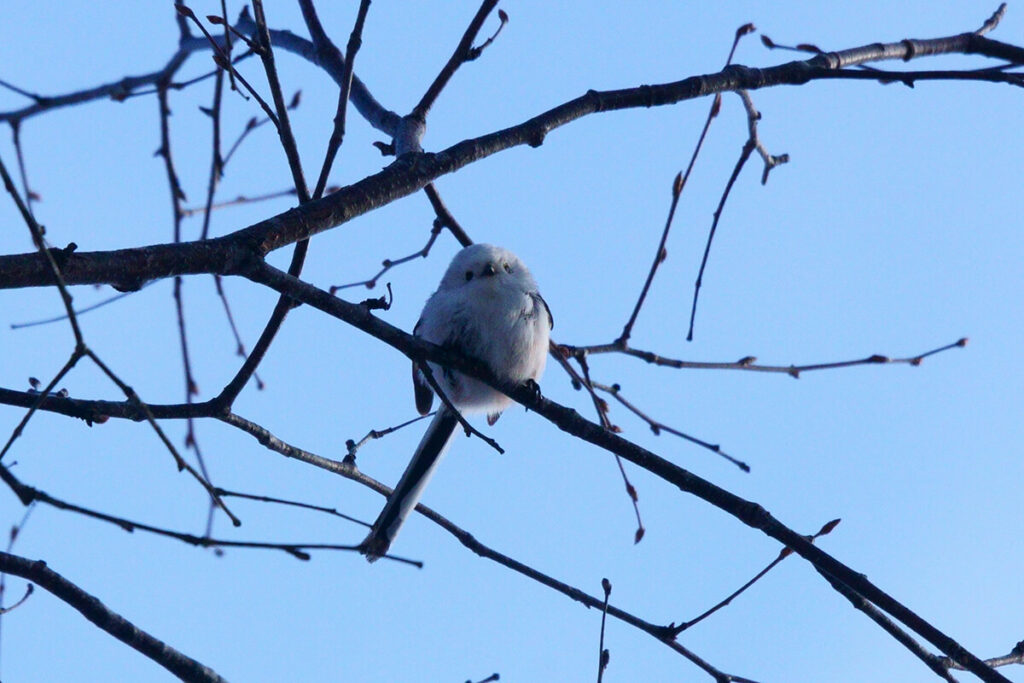
▶A long-tailed tit with its cute round eyes. If you hear a bird call that sounds like “chiri-chiri,” be sure to look up to a high point in a tree.
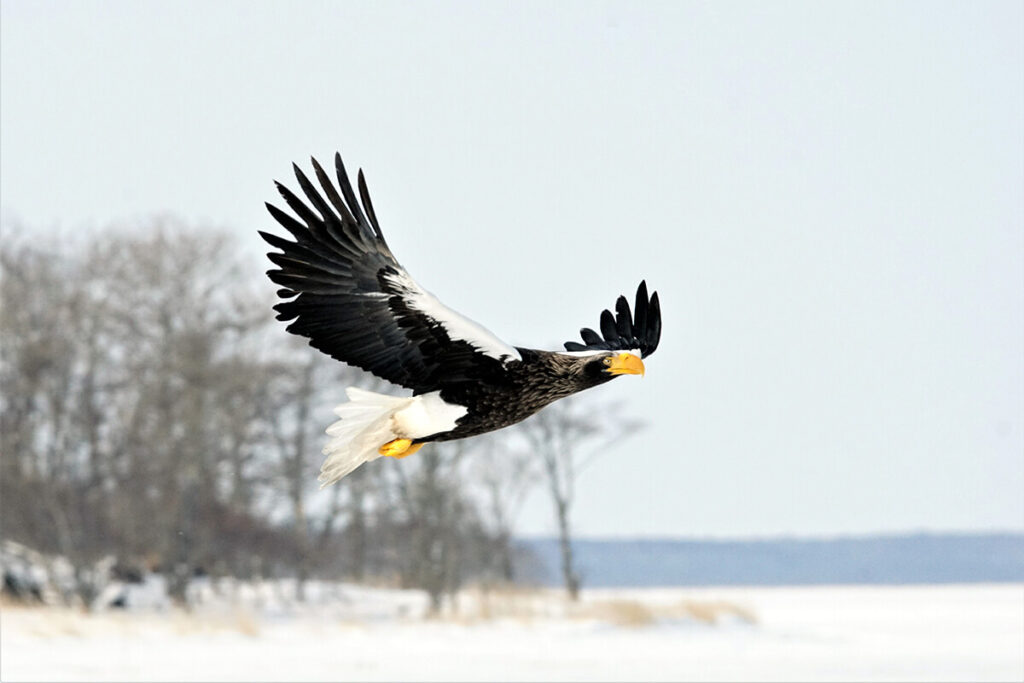
▶The Steller’s sea eagle is known for flying in a straight line while flapping its wings slowly.
Even so, “it’s hard to find birds that you haven’t seen before,” concedes Mr. Sawao. “If you haven’t seen a particular species in real life then you don’t know how they move. The real thing differs from what you see in photos.” I could tell that the more experience you build up, the more fun birdwatching becomes.
Experiencing the wonders of birds through birdwatching
Mr. Sawao talked excitedly about the many birds that can be seen in Nemuro. He shared with me a side of birds not found in field guides that he knows only because he has lived in this area and experienced the natural environment. I was impressed by the depth there is to birdwatching.
To those who want to try birdwatching, Mr. Sawao said, “You don’t need to prepare anything special. Everyone is welcome to join us.” The first thing to do is to dive into the nature of Nemuro and listen carefully to the birdsong.
Information
Nemuro Nature Center
3-19-8 Tokiwa-cho, Nemuro
Phone: 0153-27-1434
https://canoecraft.net
Related Articles
#souvenirs #localfood
#footpath #charmsofnemuro
#hanasakiline #charmsofnemuro




